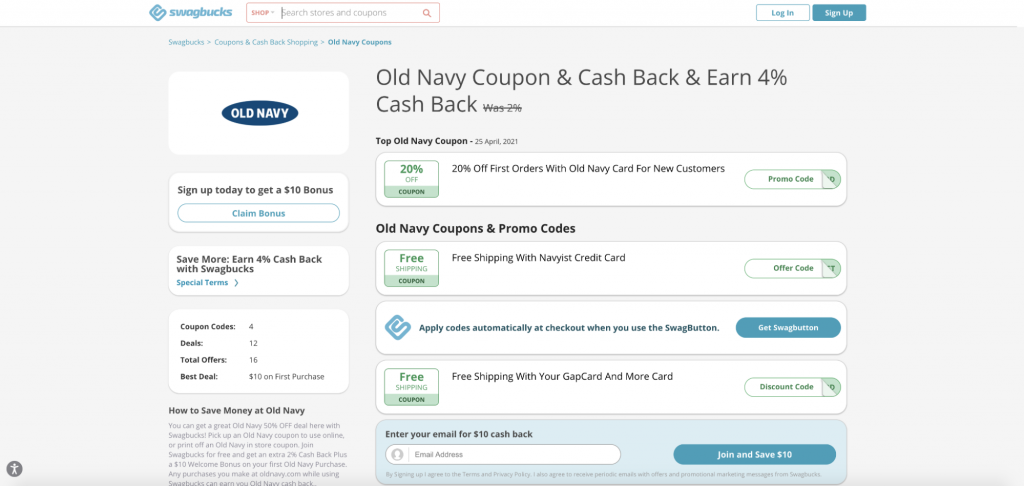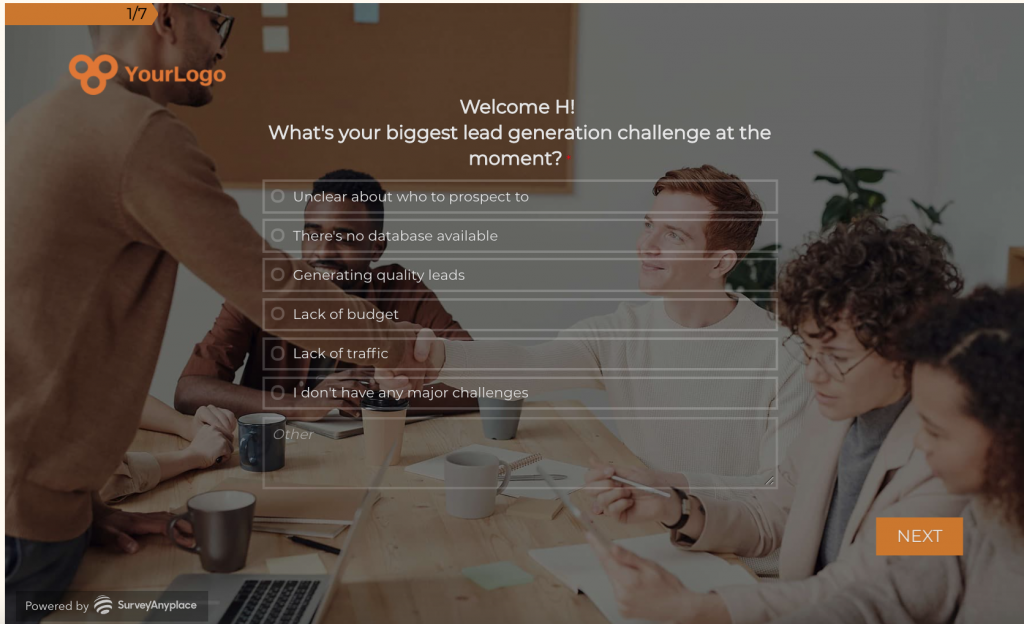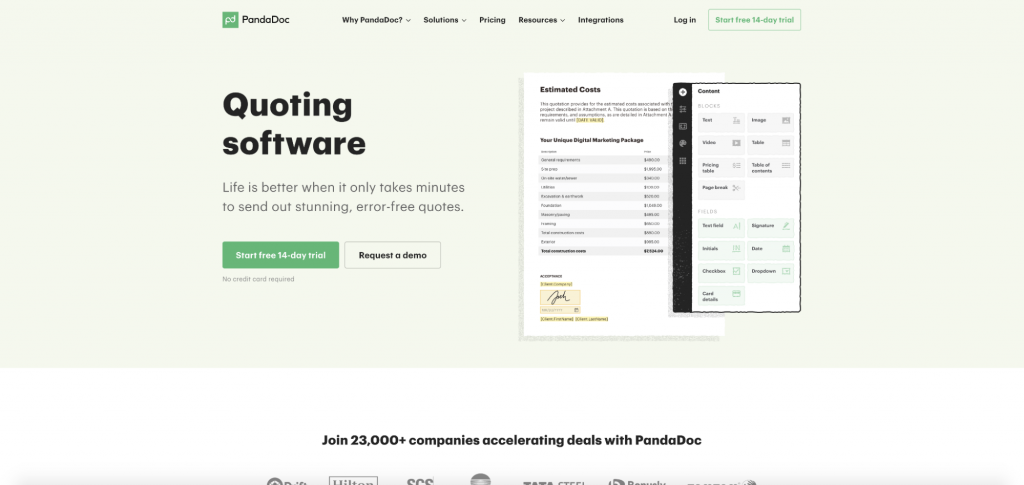How to Leverage Customer Data for Next Level Retargeting
It’s rare for companies to have hyper-effective marketing campaigns that cause the consumer to buy immediately after seeing an ad.
Quick Links
Instead, companies must continuously court the consumer in hopes of one day converting them into a customer.
This can be costly, and if it isn’t done strategically, it can be downright ineffective.
Thankfully, businesses can use customer data for retargeting potential customers and continuously enticing them to buy.
This post will highlight the three main ways you can use customer data to reach and target new consumers more effectively.
1. Launch digital ads, retargeting your site visitors
The scientific approach to digital marketing has evolved over the years. The days of launching a campaign and targeting based on consumer interests are over.
Now, you can use a wide array of customer data to launch effective campaigns that will drive conversions for your business.
Imagine that everyone who visited your website would see an ad just hours or days later while they are casually browsing Facebook. Your product and company would re-enter their mind, triggering a reminder that your brand exists.
Just like that, another opportunity to purchase becomes available.
This type of retargeting is the new standard. By installing a pixel (a line of code that is connected to your ad account), you can retarget consumers who visit your site with relevant ads.
In addition, you can even go one step further and add a layer of first-party customer data to enhance your targeting.
For example, let’s say you visited Swagbucks to try and find a coupon for Old Navy. By visiting that page, Swagbucks knows that you’re an avid shopper who is looking for clothes and has an interest in Old Navy.

Swagbucks can then use this data to retarget you with relevant ads. Perhaps it will show you an ad with a new Old Navy coupon in an attempt to get you to redeem it through the site. Maybe it will provide an ad featuring a store just like Old Navy that the company thinks you might like.
Swagbucks could layer on demographic data from existing customers who have already redeemed these coupons to make the ad campaign more effective. Some of these data points include gender, household income, age, and location.
By infusing customer data into your digital ad campaigns, you’ll lower the cost-per-acquisition (CPA) and target the right customers more effectively.
2. Personalize nurture email campaigns with customer data
Customer data is also valuable for your email campaigns. Segmented email campaigns are an effective way to convert new customers.
But how can you capture prospect and customer data to use? My best advice is to capture data using a lead generation quiz to entice the customer. These type of quizzes are an interactive way to discover your audience’s needs and can lower cost per lead by 90%.

Alternatively, you can use typical forms on your website. If consumers aren’t ready to buy, you should strive to get their email addresses so you can re-market to them later.
Then, look at your email database. What information are you capturing? The essential customer data you should be asking for includes name, email address, phone number, zip code, and birthday.
With this information, you can do a lot with your email marketing strategy.
For example, if you offer a free trial like PandaDoc does for its quoting software, you can capture prospective customers’ names, emails, phone numbers, and more when they sign up for a demo. Then, you can add them to a drip-email campaign that sends necessary product information.

As the consumer gets each email, they’ll learn more about the product and be encouraged to continue using it.
These emails can be personalized based on the information that the consumer inputted during the sign-up process.
For example, if they are in a certain geographical area, they might be served emails with personalized examples and locations that they are familiar with.
Not every customer will buy your product for the same reason. That’s why it’s important to personalize your message based on the data you’re given.
You can go beyond nurture campaigns and create targeted email campaigns based on the customer data you have.
For example, it would be a good idea to target different personas in your database for specific promotional campaigns.
Here are some examples of the types of targeted email campaigns you could launch using customer data:
- Target families with a discounted family four-pack or grouped product promotion
- Segment customers by industry and send them personalized messaging
- Reach out to high-value customers with other products that may interest them
- Send a special promo code on customers’ birthdays
As you continuously engage with existing and prospective customers through email, you’ll move them along their own customer journey and nudge them towards converting.
3. Launch data-enriched direct mail campaigns
Customer data isn’t just useful for digital marketing campaigns. It can be used to inform your direct mail marketing campaigns as well.
No, direct mail isn’t dead. In fact, it can be highly effective when you infuse customer data into your strategy.
Imagine that you’re a prospective customer, and you get digital ads on Facebook and an email from a company in the days that follow your first visit to its website. Then suddenly, a product brochure or postcard from that company arrives in your mailbox a few days later.
This is an effective way to continuously engage and remarket to your customers using a variety of online and offline tactics. With an omnichannel marketing approach that uses customer data, you’ll be able to more effectively reach and convert customers through tactics that actually work.
To begin planning your next direct mail campaign, make sure you are collecting address data. Go beyond basic email collection efforts and request the address information of your customers and prospects.
You can then dive into the strategy for your direct mail campaign. What are you trying to accomplish? Who should receive a promotional mailing from your company?
Direct mail costs can sometimes creep up if you aren’t careful. That’s why it’s important to use existing customer data to understand which segment of your customer base will be most likely to convert based on a direct mail campaign.
Monitor your email open rates. See who is engaging with your ads and social media posts. Retarget this engaged following with a tangible direct mail promotional campaign. This can range from a postcard to a full-blown catalog.
To track the effectiveness of your direct mail campaign, include a promo code. This data can inform your next campaign as well, making it easier and more effective to target the right segment of your audience with a relevant piece of branded content delivered to their mailbox.
Making the data work for you
Supercharge your campaigns with customer data. In order to effectively remarket to customers and prospects, you need to infuse customer data into every aspect of your campaign. If you don’t, you will be aimlessly targeting a wide audience that may have no interest in your company.
Start by leveraging customer data in your remarketing campaigns on digital ad platforms. Add a pixel to your website and layer on demographic, geographic, psychographic, and purchasing data from your existing customers.
Create segmented email campaigns based on existing data to nudge prospects toward purchasing. Finally, take your marketing efforts offline and get strategic with a data-enriched direct mail campaign.
Together, these campaigns will lay the foundation for an omnichannel marketing approach that will effectively engage and convert existing and new customers.
Guest author byline

Axelle Dervaux has experience in digital marketing with a focus on B2B marketing for SaaS companies. She’s working in various marketing fields such as SEO and SEA, social media, lead nurturing, customer retention, product marketing. She is the Marketing Manager at clicdata.com, a cloud-based business intelligence, and data management platform. You can connect with her on LinkedIn.
What Is WooCommerce Product Slider and Why Your Store Needs It
Why Do Product Images Matter So Much in Online Stores? When someone visits an online store the…
0 Comments9 Minutes
How to Streamline Your Customers’ Shopping Experience?
The goal for any online store is to make shopping as smooth as possible. When visitors move…
0 Comments8 Minutes
Strengthening Brand-Customer Relationships Through Gamified Loyalty Programs
Creating lasting connections with customers has become increasingly vital as the marketplace grows…
0 Comments6 Minutes
How to Use SEO and SEA Together in Search Engine Marketing
In digital marketing, search engine marketing (SEM) plays a critical role in improving online…
0 Comments10 Minutes
Content Marketing Growth Hacks: Real Shortcuts to Drive Traffic
Are you still lagging in content marketing? Sticking to these old strategies seems…
0 Comments10 Minutes
How to Build a Strong Local Following Using Social Media Marketing
In the days of likes, shares, and stories, local businesses have a golden opportunity to create…
0 Comments9 Minutes
Why WooCommerce is the Best Choice for Your Online Store?
WooCommerce stands out as a top option for anyone looking to build an online store. This platform…
0 Comments8 Minutes
How to Use AI-Powered SEO Tools for WordPress eCommerce
SEO is a critical factor in the success of any e-commerce WordPress store. As competition…
0 Comments11 Minutes
1 Comment
Comments are closed.









Thank You For The Info